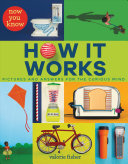2018 School Spending Survey Report
Now You Know How It Works
photos by Valorie Fisher. 40p. diag. glossary. Orchard. Sept. 2018. Tr $17.99. ISBN 9781338215458.
COPY ISBN
VERDICT An engaging and visually tempting starting point to prepare kids for more in-depth titles like David Macaulay's The Way Things Work Now.
ALREADY A SUBSCRIBER? LOG IN
We are currently offering this content for free. Sign up now to activate your personal profile, where you can save articles for future viewing




Be the first reader to comment.
Comment Policy:
Comment should not be empty !!!